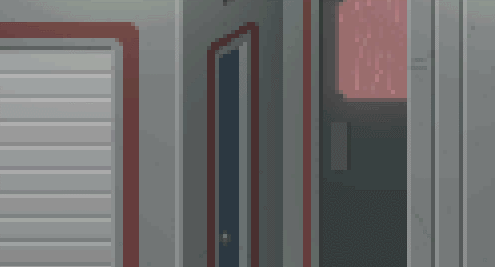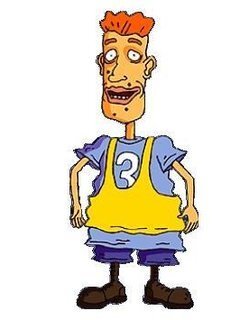
Trapezzoid
Members-
Posts
26 -
Joined
-
Last visited
Content Type
Profiles
Forums
Events
Everything posted by Trapezzoid
-
The LucasArts logo was bad, but so was the rectangular big-L-big-M LucasFilm Games logo. Only the pre-1988 curved logo looked good.
-
You're probably right. When you instinctively find a melody that "sounds right" it's not always clear if it's The Muse or a faded memory of something you heard years ago. LeChuck's theme more likely used Grim Grinning Ghosts as a conscious inspiration, but maybe another eerie 60s children's song got mixed into that process. The Orient Express melody is a little less simple. Hit the Road is packed with great music, I'd love to listen to inspirational material they used.
-
A few of the classic LucasArts melodies are a little less original than we always assumed. Some of them are old folk songs and maybe meant to be recognized, but a couple push it and I'm not sure if they just hoped nobody would notice: Doug the Moleman = Murder on the Orient Express LeChuck = Beautiful Things from Dr. Dolittle
-
I feel like SCUMM games are pretty bug-free for how complex they are. I want to see more exploits like that shopkeeper walk path bug.
-
A few months ago I had a dream that EMI got remastered to lean into a simplified low-poly aesthetic, and it felt more like a hip absurdist Katamari Damacy type of game. That's how I now choose to remember it.
-
Maybe a few thousand of those are Guybrush saying "I have ___ pieces of eight."
-
https://mixnmojo.com/news/A-dead-end-monkey-style Looks like you can end up stuck in LeChuck's torture pit if you sidestep getting the mixed drinks. (Someone commented on that Mojo post from 2008 referencing the MI1 fire dead end, so it's been known for a while.) Am I remembering correctly, can you waste all your money in the grog machine in MI1?
-
MI2's art is scanned and digitized kind of poorly IMO. The retouches are minimal, they left in a lot of grain and smudginess. By DOTT and Sam & Max their process got a lot cleaner. Those games' paintings are totally repixeled over with solid colors and handpicked palettes, using the scanned artwork as more of a guide layer for the final pixel art.
-
With the NASA connection I wonder if they're gonna continue on with the alien lore, Chariots of the Gods stuff. Either that or Indy proves the Flat Earth theory.
-
Thanks, and yup! I actually showed Ron some screencaps when he was demoing Thimbleweed at XOXO Fest, he said he liked my art 🤩 That's a pretty interesting thought, that you'd get used to the one-click norm and only think to check for other options on intuition. I think it depends on your completionist urge-- sometimes you need to feel like you've fully swept a room before moving on, and I'd probably never stop right clicking on everything.
-
Re: verbs. I played a little bit of Delores, and the context-menu system is pretty snappy, but most hotspots can only be looked at so it's effectively a menu with one item. Sometimes two. If I see an object that looks like it can be picked up, I'd prefer to try and fail, rather than be prevented from even trying. This means either you write a lot of tailored responses, or rely on canned responses. It's annoying, but I think it contributes to the "never know until you try" aspect of solving these games. I designed a game interface with a menu that always had at least three options per hotspot-- eye, hand, and mouth. Like CMI, the exact verbs changed based on context. Rather than being able to talk to inanimate objects, most items had a "look at" and a "talk about", which meant writing both Sierra-style popup descriptions AND an in-character spoken line. Might've been descriptive overkill.
-
Context lists can cheapen the experience a bit too. You ideally want to come up with an idea and try it. Clicking a hotspot and seeing an interesting option you hadn't considered pop up on the list defeats the purpose. That's just the game telling you what to do.
-
Best way to fuzzy up the timeline would be to make Guybrush into a folk legend like Baron Munchausen.
-
I don't really have a beef with the performances, I just think it's a quality of the writing in those days that works best with your inner voice. They weren't expecting anyone to act out those lines, they were crafting them with the intent of their words rendering in glorious pixelated text. The dialogue has a pithy, Far Side cadence to it. So deadpan it's silent. Now that I've seen a bunch of SCUMM script I appreciate what a great creative tool it was for letting multiple people write a game collaboratively. That's what gives MI its charm, writing it was functionally pretty close to just some dudes making each other laugh on a BBS.
-
The old games are written to be read, tbh. The delivery and timing in your imagination is better than any voice acting.
-
-
I wonder if the inventory icons had to use palette slots that were previously exclusive to the characters.
-
Has Guybrush been confirmed?
-
Ha, cool. Yeah, I had a feeling MI2's ending was the result of writing himself into a corner and coming up with a left turn that doesn't exactly fit, but still works pretty great. I think the most enraging part about it is that it's ambiguous and a cliffhanger. If MI2 outright said that it was all a fantasy, that would be a hell of an ending, but it'd sort of kill the sequel potential. It's that unresolved feeling that drives the hate mail. I wonder what the deeper secret of MI1 he alluded to was, then. Maybe it was going to have the Thimbleweed ending.
-
That fall 1990 interview is cool, it shows that Ron had the amusement park idea (or whatever it is) by the end of MI1's production at least. MI2's Barton Fink reference is interesting to think about. That movie has a very questionable reality and a distinct main-character-is-in-Hell vibe.
-
The original Secret does seem to be the entrance to Hell, which for the purposes of MI1 is simply a spooky magma marina where ghost pirates dock and not much else. MI2 takes the same hidden-entrance idea and introduces some actual torment. I forgot LeChuck actually doesn't want Guybrush to find it, which doesn't make sense if it's a deliberate trap. If it's all a fantasy and Chuckie just doesn't want the game to end, why confess to being his brother, etc?
-
-
I'm pretty sure the Secret of Monkey Island is the title of the game, which was chosen because it sounds like a classic pirate adventure. When characters ask about it, it's a bit of fourth wall breaking with the trademark symbol and all, like the characters themselves saw the title screen. The developers were a bunch of irreverent dweeby programmers improvising jokes for eachother. Despite that, they stumbled upon a wonderfully evocative atmosphere, and managed to thread the needle into a sort of sarcastic mystique.
-
My point is that occasional anachronisms like t-shirts and grog machines are simply part of the storytelling style of Monkey Island. Retconning them into the plot itself is overwriting. It'd be like Airplane ended with Striker waking up on a flight with a copy of Mad Magazine over his face.
-
MI2's ending potentially has the same issue as TP though, which is that it takes all the parody and anachronisms of MI and gives them an in-universe explanation. I personally think leaning into the it's-all-a-dream twist takes the fun out of those elements, once you get over the mindfuck. So I kind of hope they do stick to the curse explanation, and they have a good out: The Big Whoop carnival doesn't look explicitly modern. Guybrush's parents are still dressed old-timey. The carnival looks like something that could easily exist in MI's satirical 1700s, maybe even a place Guybrush remembers visiting as a child. All the commercialization and fourth-wall jokes don't need to be explained by the carnival, they're just part of the MI aesthetic.









